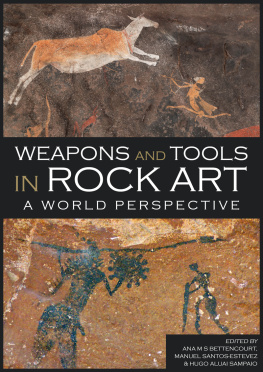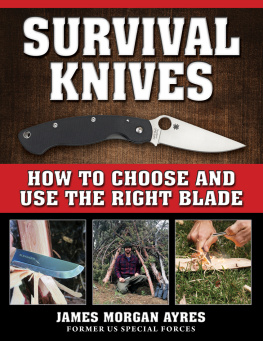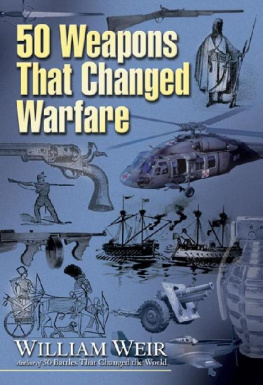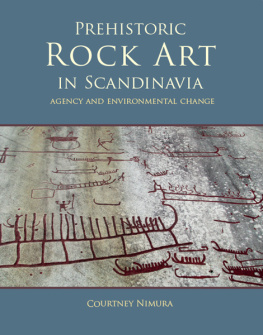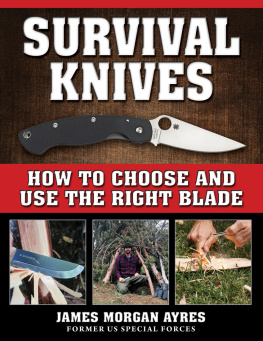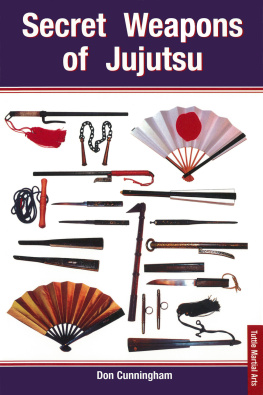Ana M. S. Bettencourt - Weapons and Tools in Rock Art: A World Perspective
Here you can read online Ana M. S. Bettencourt - Weapons and Tools in Rock Art: A World Perspective full text of the book (entire story) in english for free. Download pdf and epub, get meaning, cover and reviews about this ebook. City: Oxford, year: 2021, publisher: Oxbow Books, genre: History / Science. Description of the work, (preface) as well as reviews are available. Best literature library LitArk.com created for fans of good reading and offers a wide selection of genres:
Romance novel
Science fiction
Adventure
Detective
Science
History
Home and family
Prose
Art
Politics
Computer
Non-fiction
Religion
Business
Children
Humor
Choose a favorite category and find really read worthwhile books. Enjoy immersion in the world of imagination, feel the emotions of the characters or learn something new for yourself, make an fascinating discovery.
- Book:Weapons and Tools in Rock Art: A World Perspective
- Author:
- Publisher:Oxbow Books
- Genre:
- Year:2021
- City:Oxford
- Rating:5 / 5
- Favourites:Add to favourites
- Your mark:
Weapons and Tools in Rock Art: A World Perspective: summary, description and annotation
We offer to read an annotation, description, summary or preface (depends on what the author of the book "Weapons and Tools in Rock Art: A World Perspective" wrote himself). If you haven't found the necessary information about the book — write in the comments, we will try to find it.
The major concern is to discuss the possible meanings of these embodied signs in different areas and periods, since meanings are permeable both to time and space. Papers either centre their attention in broader approaches based on a specific area, region or people, or focus on particular case studies.
Table of Contents
Approaches to engraved meanings and significances of weapons and tools in rock
art (Introduction)
Ana M. S. Bettencourt, Manuel-Santos-Estvez and Hugo Aluai Sampaio
1. Weaponry in Levantine Rock Art
Manuel Bea Martnez
2. Megaliths and weapons representations. A view of the birth of warriors images
Barroso-Bermejo, R., Bueno-Ramrez, P., Balbn- Behrmann, R. de, Linares-Catela, J.A.,
Mora-Molina, C., Vera-Rodriguez, J.C
3. The procession of weapons. Ritual Landscape in Late Prehistory
Manuel Santos-Estvez
4. West Iberian Bronze Age weapons in carved places: some ideas for its ontology
Ana M. S. Bettencourt
5. Representations of warriors and weapons in Swedish Rock Art - context and
chronology
Ulf Bertilsson
6. The image of tools and the metaphor of life
Shemsi Krasniqi
7. Ancient rites as evidenced in the representation of weapons and tools in a rock art
tradition in Northern Greece
Stella Pilavaki.
8. Not what it seems: approach to Northwestern West of Iberia weapons and tools
rock art depictions and modern storytelling serving touristic and educational purposes
Hugo Aluai Sampaio
9. Horsemens Weaponry in Rock Art of Jebel Rat (High Atlas, Morocco). Signs of a
social elite?
Alessandra Bravin
10. The representations of weapons and objects in the rock art of Tunisia
Jaafar Ben Nasr
11. Tools and weapons in African Rock Art
Augustin Holl
12. Painted for War: rock art depictions of archers with arrow head-dresses in the
Eastern Cape, South Africa
Brent Sinclair Thomson
13. Symbolic and ritual significance of weapons in Western North American rock
images
David Whitley
14.Weapons and war related objects in Guachipas rock art (Salta, Argentina)
Mara Pa Falchi
15. The representations of rock art weapons in hunting scenes from Serra da Capivara
National Park - Northeast Brazil
Leonardo Borges; Daniela Cisneiros, Hrcules Costa and Nathlia Nogueira.
16. Weapons and rock art engravings, a case study of wary filiation in the Queneto
site, Viru Valley, Peru
Mara Susana Barrau ; Daniel S. Castillo Bentez,
17. The picturing of weapons and other objects at stenciled and painted rock art sites
Patricia Dobrez
Ana M. S. Bettencourt: author's other books
Who wrote Weapons and Tools in Rock Art: A World Perspective? Find out the surname, the name of the author of the book and a list of all author's works by series.

